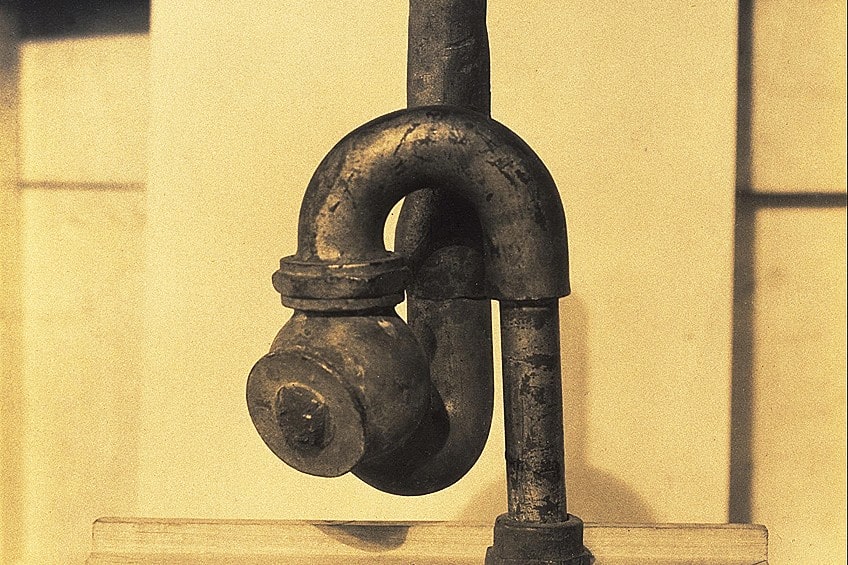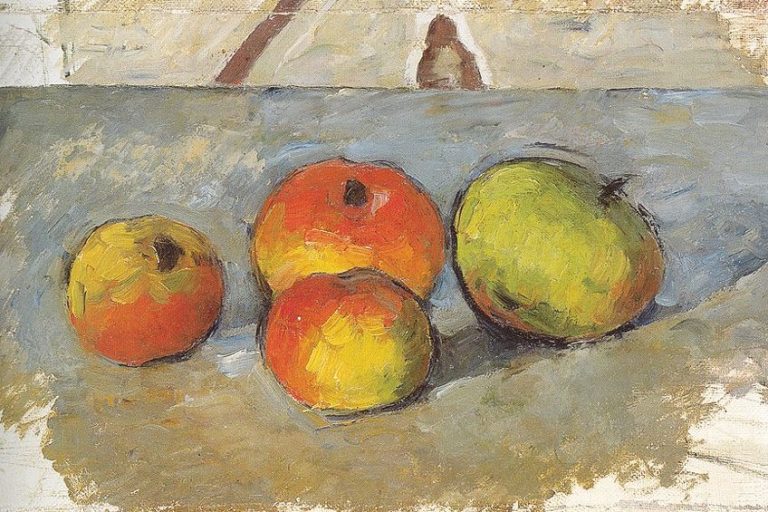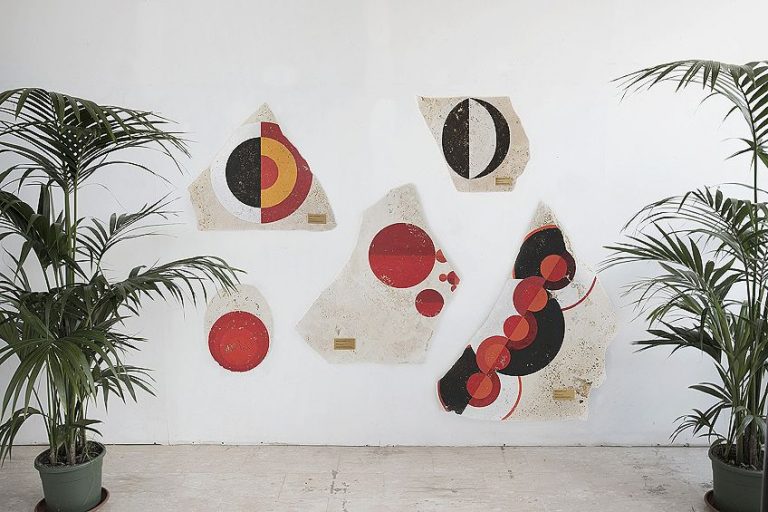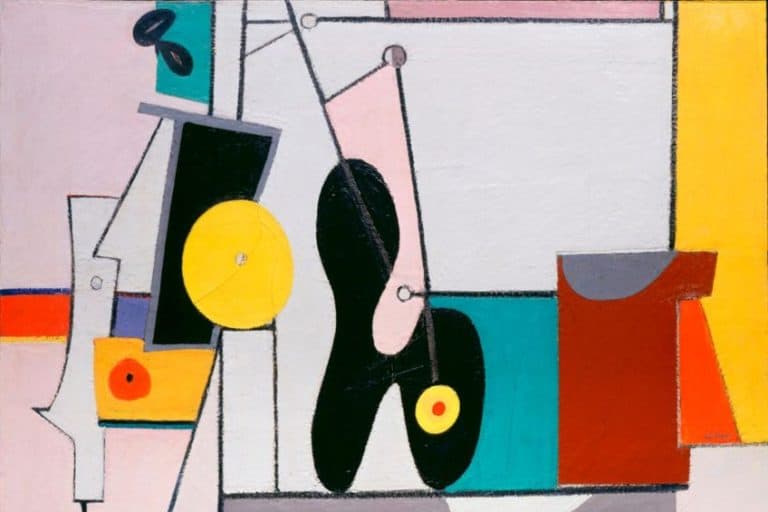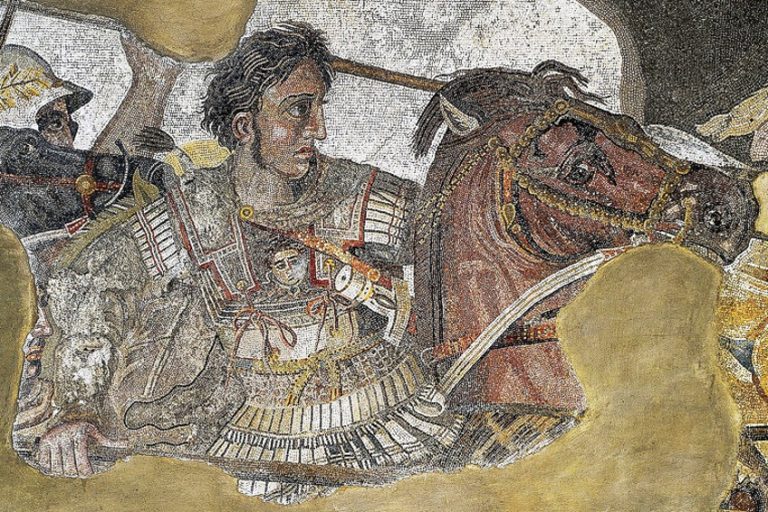Readymade Art – The Legacy of Repurposed Art
Artists have pushed the boundaries of what we perceive as art for centuries. Each new art movement stirred up controversy at the time of its creation. However, few have turned the art world upside down quite like readymade art. Over a century later, viewers are still confused and fascinated by readymade art and how it redefined the very notion of art.
A Brief History of Readymade Art
Many may ask the question, “What is readymade art?” It is the process of taking an everyday functional object, preferably with no clear aesthetic value, and repurposing it as art. Readymade art does not require reworking these found objects, and many regard it as a kind of still life art form. Anything can be used in readymade art, from a snow shovel or a flashlight to old chair caning. The idea is to give us a new point of view on an ordinary article of life that is separate from the idea of useful significance.
Sometimes objects are combined, but the point is to leave them as untouched as possible.
The Origins of Readymade Art
To fully grasp the idea of readymade art, it is best to look at the origins of this contemporary art movement. A Frenchman named Marcel Duchamp developed the readymade art movement in the 1910s. Duchamp was a painter, who participated primarily in the Impressionist and Cubist movements of the late 19th and early 20th centuries. Although he was somewhat successful, he concluded that he would not change the world if he continued to participate in these movements. Thus, he went in search of new inspiration.
In 1913, Duchamp exhibited his first readymade “Bicycle Wheel” to the public. The readymade sculpture consisted of a bicycle wheel attached to the top of a wooden stool.
Although this caused upset amongst art critics, it did not cause a scandal in the same way as The Fountain (1917). The Fountain, which entailed a porcelain urinal turned on its side and signed with Duchamp’s pseudonym “R. Mutt”, caused shock and disgust amongst the general public.

Riling up the public was exactly Duchamp’s intention as the purpose of The Fountain was to be thought-provoking. Many credit his sculptures as a forerunner of conceptual art, which is not only common but highly praised in our modern society. The readymade artist’s primary desire was to redefine the notion of art and what it meant to be an artist.
He wished to make art less visual and more cerebral, and placed importance on the concept of the art piece over its actual visual representation. Duchamp had taken an object, rid it of its original intention, and called it art.
And thus, it was art. He asked that audiences try to forget that The Fountain was originally a urinal, and remove all of the symbolism they had attached to the original object to view it as a neutral object. This is something that many viewers and art critics struggled with immensely. To try to help audiences comprehend his artworks, Duchamp defined the process of creating readymade art as follows.
The first step was to choose the object, to him this was as creative an act as painting. He tried to choose objects that were as banal as possible and which could be considered neither beautiful nor ugly. Then one should remove their practical abilities. For example, by attaching a bicycle wheel to a chair, as in Bicycle Wheel, one can neither ride the bike nor sit on the chair. In removing their intended function, one changes what the object is. Finally, by signing it and giving it a title, you give the object new meaning, thus turning it into a piece of art.
Duchamp’s sculptures also changed what it meant to be an artist. Duchamp did not manufacture his sculptures; he simply combined or displayed the objects.
Did this mean that he was not an artist? And if not, was the manufacturer of the objects then considered an artist? Many people found this thought process controversial and hard to accept. During his lifetime, Duchamp created 13 pieces of readymade art. However, Duchamp’s readymade sculptures are not the only existing works of readymade art. Since the beginning of the movement, there have been many more readymade artists. In our current day, art in which the concept is more important than the visual is fairly common-place.
Famous Readymade Artists
The readymade artists of the early 1900s were a small, eclectic crowd. New York City was a creative hub full of artists from all backgrounds and ethnicities. Avant-Garde movements such as Dadaism flourished here due to its melting pot and fairly liberal society. Within this art scene, artists like Tracey Emin, Damien Hirst, André Breton, Robert Rauschenberg, and Joseph Beuys flourished.
Although there have been many readymade artists throughout the years, the three disgusted below were highly influential and were all part of the New York Dada scene.
Baroness Elsa von Freytag-Loringhoven (1874 – 1927)
| Date of Birth | 12 July 1874 |
| Date of Death | 14 December 1927 |
| Nationality | German |
| Famous Works | God (1917) Cathédrale (c. 1918) |
She was born Else Hildegard Plötz on 12 July 1874 in Swinemünde, Germany. Von Freytag-Loringhoven was highly progressive and is known as one of the most controversial women of her time. Her feminist, anti-patriarchal ideals began at a young age. This is likely because her father Adolf Plötz was very controlling, which caused her to rebel against any form of male authority. Von Freytag-Loringhoven was very close with her mother, however.
Her mother often repurposed found items, something that would have a huge influence on her art later on.
As a young woman, Von Freytag-Loringhoven trained as a performer and participated in vaudeville performances all over Europe. She would then go on to study art at an institution in Dachau. During these times, these occupations were not considered appropriate for admirable young women. However, this bothered Von Freytag-Loringhoven very little and was only the start of her rebellious, offbeat career.

Von Freytag-Loringhoven did not have much luck in love. In 1901, she married August Endell, a German architect. They had an unconventional marriage in which they were allowed to pursue other love interests, something highly scandalized at the time. One such love interest was Endell’s friend and Canadian novelist, Fredrick Philp Grove. For a time, things were harmonious, with the three even going on holidays together. However, this harmony did not last long and the two divorced in 1906.
Von Freytag-Loringhoven married Grove the following year. However, their happiness was not long-lived either. By 1909, Grove found himself drawing in financial debt in Germany. Thus, the two staged his suicide so that he could escape to the United States and start a new, debt-free life.
Von Freytag-Loringhoven joined him in the States a year later so as not to cause suspicion. There they ran a farm in Kentucky for a short while.
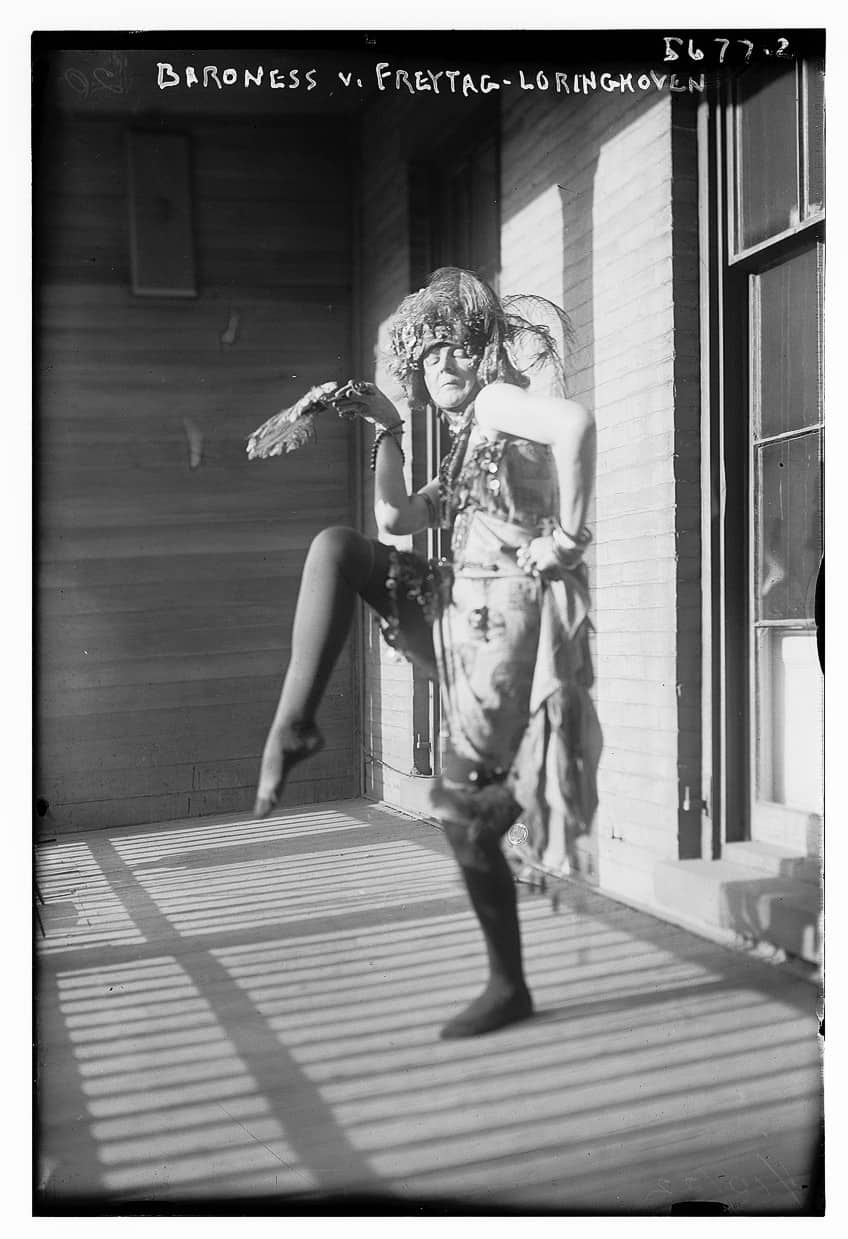
However, it was not long before Grove deserted von Freytag-Loringhoven. In 1913, she met and married German Baron, Leopold von Freytag-Loringhoven. The two moved to New York City, which is when her career as an artist really took off. She modeled, as can be seen from some of Man Ray’s photography at the time. However, her main aspirations were as a poet and artist.
Although she had a huge collection of poetry, very little was published or performed until recently. In 2011, a collection of her poets titled Body Sweats: The Uncensored Writings of Elsa von Freytag-Loringhoven was published. Her progressive poetry was now able to be appreciated in a time in which women were allowed to have a voice.
With regards to her art, she was most known for creating a form of readymade art known as assemblages.
Most of her art was created with discarded items that she found on the streets of New York. Her sculptures were very conceptual and thought-provoking. They often portrayed anti-consumerist and anti-patriarchal messages, leading her to be a highly controversial figure at the time.
One of her most famous readymade art examples was titled “God” (1917) and featured a cast iron drain trap mounted on a box. Many believe that it was created in reference to the quote by Duchamp, which read, “The only world of art America has given are her plumbing and her bridges”.
Others think that it was made to resemble a twisted phallic shape, thus criticizing the patriarchal nature of society. In the same year, Duchamp created The Fountain. Many believe that the idea behind the readymade and the pseudonym “R. Mutt” actually belongs to von Freytag-Loringhoven. However, because she was a woman, she did not get recognition for it. Around the year 1918, von Freytag-Loringhoven created another one of her most famous readymades Cathédrale.
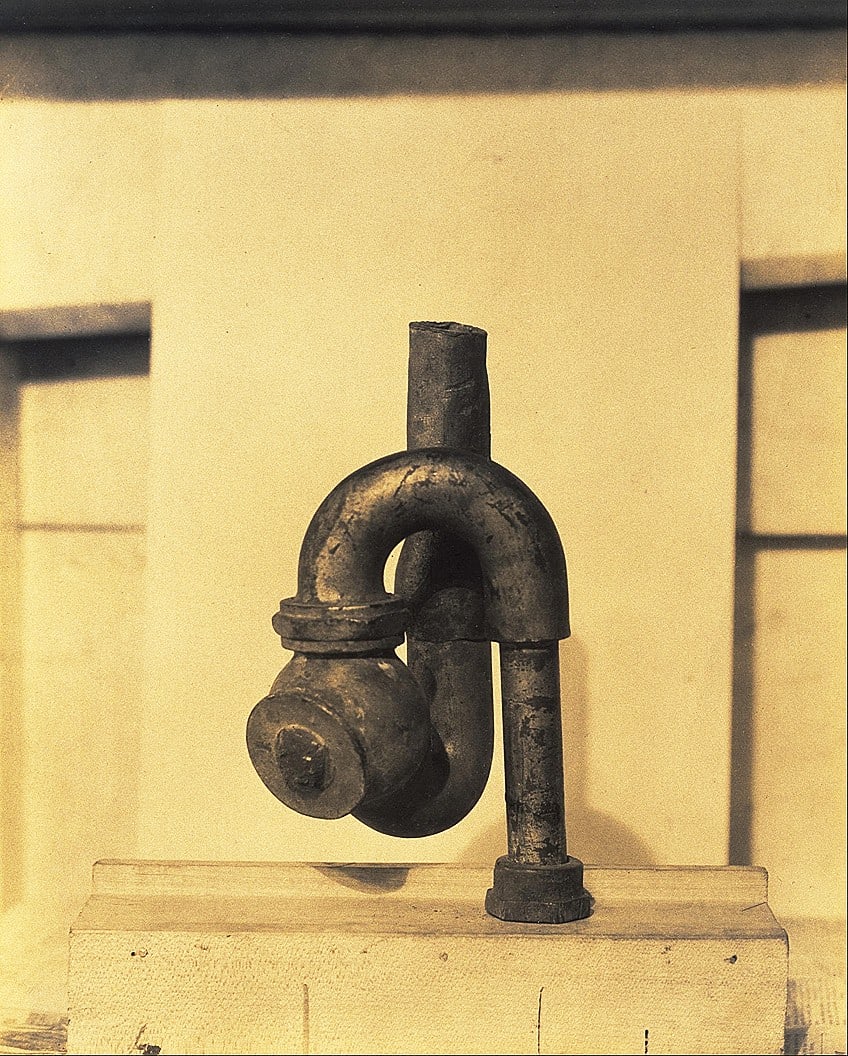
The sculpture consisted of a piece of jagged wood that von Freytag-Loringhoven had found and mounted on a wooden block. The piece of wood was said to represent one of the many skyscrapers emerging in New York.
It was inspired by the Woolworths Building, completed not long before, which came to be known as the “Cathedral of Commerce”. Von Freytag-Loringhoven’s sculpture was a commentary on the way that capitalism had become society’s new religion. In the 1920s, von Freytag-Loringhoven returned to Germany in search of more job opportunities. However, she found the country she arrived in to be very different from the one that she had left. The economy of Germany had been ravaged by the First World War as well as the reparations they had to pay subsequently.
Here she lived in abject poverty, supported financially by friends such as the famous art collector Peggy Guggenheim.
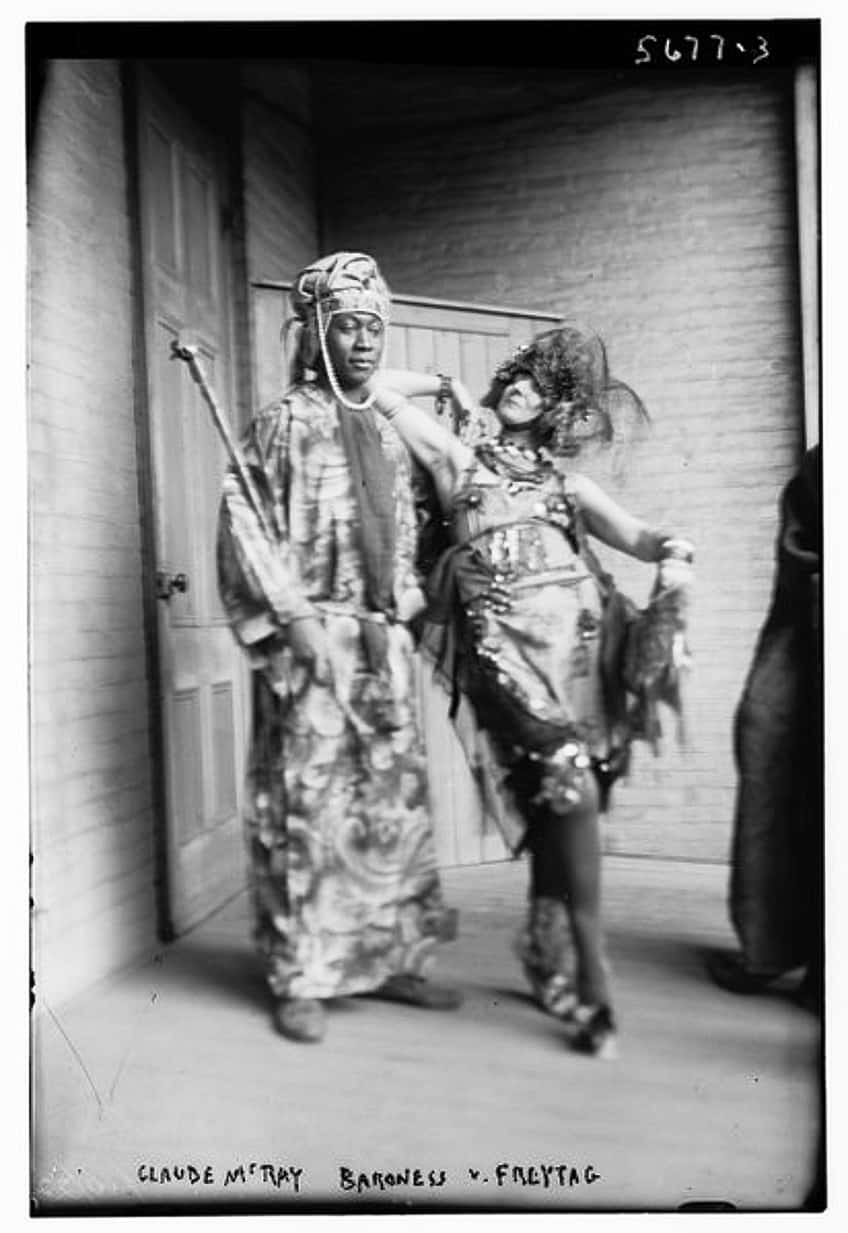
Her mental health did poorly as a result and many believed that she had gone mad. Near the end of the 1920s, von Freytag-Loringhoven moved to Paris and her situation seemed to improve. However, she was not there long before she died in December 1927. Her death was caused by gas inhalation. It is not known whether this was a result of suicide or simply a horrible accident. She was only 53 at the time of her passing, yet she had lived a full and tumultuous life already.
The impact she made on the art world has not been lost. If anything, her efforts are better understood and appreciated in the modern day.
Marcel Duchamp (1887 – 1968)
| Date of Birth | 28 July 1887 |
| Date of Death | 2 October 1968 |
| Nationality | French |
| Famous Works | Nude Descending Staircase No. 2 (1912) Bicycle Wheel (1913) Bottle Rack (1914) Fountain (1917) Étant Donnes (1966) |
Marcel Duchamp was born Henri-Robert-Marcel Duchamp on 28 July 1887 in Blainville-Crevon, France. Duchamp came from a very artistic family. His parents encouraged him and his siblings to engage in culturally enriching and intellectually stimulating activities from a young age. Of the seven Duchamp children, four including Marcel would pursue careers in art. As a young boy, Duchamp excelled at art, as well as mathematics, while at school. However, he was not the most focused student. Although he was a gifted artist, he was often bored by his formal drawing lessons.
It is said that he learned much more about art from his brother, Jacques Villon, who he admired greatly.
As a painter, he was fairly successful. He was able to exhibit his works at the Salon d’Automne in 1908 and again at the Salon des Independents in 1909. His first painting to gain some talk was called Sad Young Man on a Train (c. 1911). It was an unusual combination of both Cubism and Futurism, with an emphasis on movement and form.
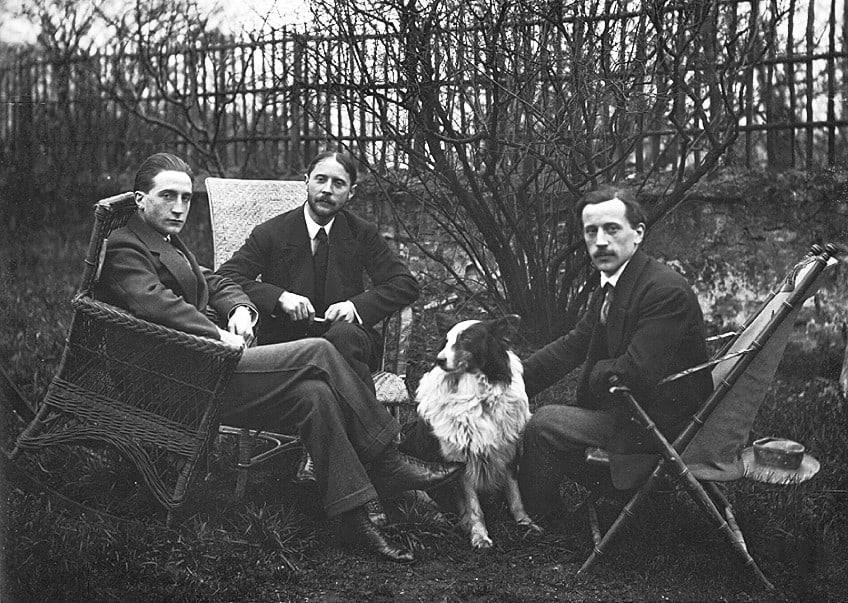
In 1912, he exhibited one of his most famous and controversial paintings, Nude Descending Staircase No. 2. This is one of the last paintings Duchamp produced. It is said that on the night of its exhibition at the Salon des Independents, artist Albert Gleizes tried to persuade Duchamp’s siblings to discourage him from presenting the piece. He asked that at the very least the title be changed. However, Gleizes had no real sway and thus the painting was exhibited with no changes. This incident did however deter Duchamp from exhibiting with other artists.
In 1913, Duchamp created “Bicycle Wheel”, in which he mounted a bicycle wheel on a stool. Although this would later go on to become one of the most famous readymade art examples, its intention was not for display.
Duchamp enjoyed its tactile nature and created it simply to amuse himself. However, a year later he produced his first intentional readymade sculpture Bottle Rack (1914). The same year as Bottle Rack was created, World War I broke out. Duchamp was able to avoid being drafted due to issues with his heart. However, many of his friends and brothers were sent off to war, leading him to feel lonely. At this time, some of his paintings began gaining popularity in the United States.
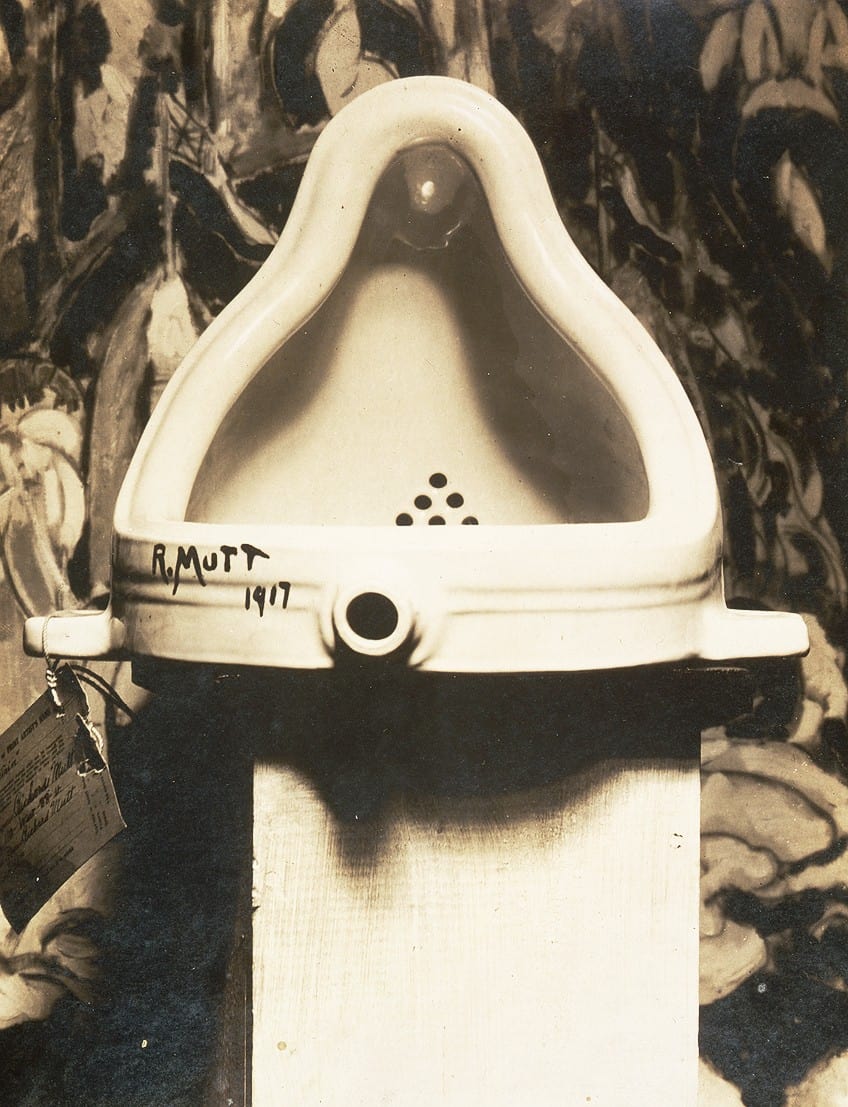
Nude Descending Staircase No. 2 was considered especially controversial. This newly found international reputation allowed several of Duchamp’s paintings to be sold. With the money he earned from his paintings, Duchamp decided to move to New York City.
In 1917, Duchamp produced one of his most famous examples of readymade art following the principles of the Dada movement. “The Fountain” was a porcelain urinal that Duchamp had turned sideways and signed with one of his pseudonyms “R. Mutt.”
Much to the outrage of many Dadaists, Duchamp was banned from displaying The Fountain at the Society of Independent Artists. Although there were no judges to decide which art could be displayed, The Fountain was not considered to be a work of art.
Even though Duchamp’s art was highly criticized he had a small yet devout following for whom he continued to produce works. Thus, he would go on to produce 13 works of readymade art in total. Included in this was L.H.O.O.Q (1919), a print of the Mona Lisa (c.1503) by Leonardo da Vinci, onto which Duchamp painted a mustache and beard. The title is a play on phonetics in which the spelled-out letter sounds like the French phrase, “Elle a chaud au cul”, meaning to be sexually aroused.
During the 1920s, Duchamp took a break from the art world and became a professional chess player and chess journalist.
He also co-published a book on chess with famous chess theorist Vitaly Halberstadt called L’opposition et cases conjuguées sont réconcielées. He participated in many chess competitions such as the French Championships and Chess Olympiad. Chess completely enthralled him in a way art had not. It is said he was so obsessed with chess that his first wife Lydie Sarazin-Lavassor glued his chess pieces to their board so that he would be forced to take a break.

In the 1960s, Duchamp’s work was rediscovered and repopularized. His readymade sculptures influenced the work of many new artists on the scene, such as Jasper Johns. In 1966, the Tate Gallery in London held the biggest exhibition of his works in history. Following this, many other galleries around the world also held exhibitions to showcase his art.
His new popularity urged him to produce one final work. His painting “Étant Donnes” (1966), displays a faceless nude lying in the grass holding a gas lamp. It was painted as though the audience was viewing the scene through a peephole.
This was the last piece of art Duchamp ever created. Two years following Étant Donnes, Duchamp passed away at the age of 81. He died in his studio in Neuilly-sur-Seine, in France, of a sudden and fatal heart attack. It is said that his last days on earth were filled with joy and that his exciting and unique life was met with a peaceful end. His legacy lasts into the modern-day and his works are considered a vital contribution to conceptual art.
Man Ray (1890 – 1976)
| Date of Birth | 27 August 1890 |
| Date of Death | 18 November 1976 |
| Nationality | American |
| Famous Works | Enigma of Isidore Ducasse (1920) Object to Be Destroyed (1923) Glass Tears (1923) Le Violon d’Ingres (1924) |
Man Ray was born Emmanuel Radnitzky on 27 August 1890 in Philadelphia, Pennsylvania. His parents were Russian Jews that immigrated to the States before their four children were born. In 1912, to avoid falling victim to the rising antisemitism of the time, they changed their surname officially from Radnitzky to Ray.
Very little is known about Man Ray’s family and life before taking on the name Man Ray. This is likely to try to distance himself from his heritage to escape discrimination. However, we do know that his father was a tailor and worked in a clothing factory. His mother also loved to design clothing for the family, creating patchwork designs out of pieces of scrap fabric.
Even though Man Ray tried to hide his parentage, sewing motifs are highly prominent throughout his work.
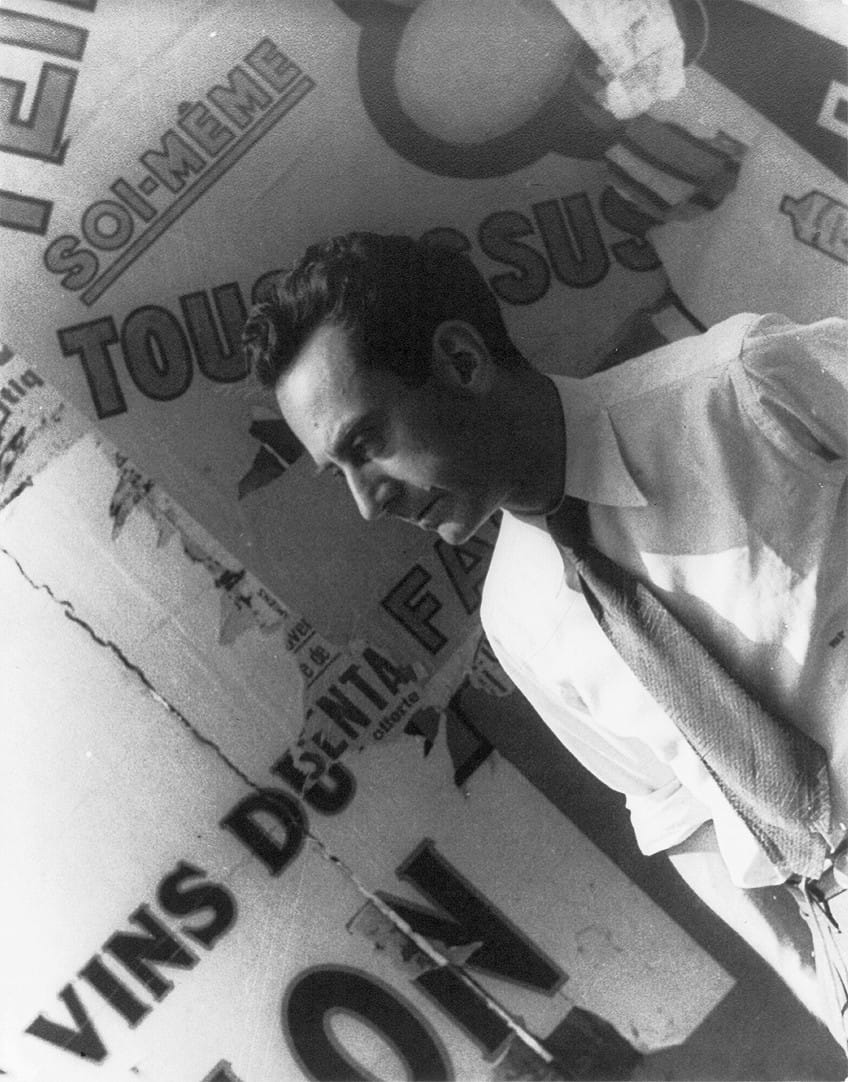
Man Ray grew up in New York City, thus he had ample opportunity to visit art galleries throughout his youth. He was highly inspired and would often try to sketch the famous works of art that he saw to practice his drawing skills. Although his parents were concerned about his desire to pursue an art career, they were still supportive.
Whilst painting, Man Ray also did freelance jobs as a technical illustrator for several different companies in New York. This paid him just enough to support his art and allowed him to hold the first exhibition of his work in 1915. In this exhibition, he displayed primarily paintings. However, he would go on to explore a range of media including sculpture, photography, and film.
In the early 1920s, after making friends with Marcel Duchamp, Man Ray tried his hand at being a readymade artist.
In 1920, he produced Enigma of Isidore Ducasse, which was a sewing machine wrapped in brown cloth and secured with string. The next year he created Gift (1921), which consisted of a flat iron with metal pins attached to it. In 1923, he created one of his most famous readymade examples, Object to Be Destroyed a metronome with a picture of an eye attached to it. This readymade would later be exhibited in the first Surrealist exposition in Paris, alongside the likes of Picasso.
Man Ray also moved to Paris in the 1920s. Here he became ensconced in the bohemian art scene there. At this time film and photography were his favored means of creative outlet.
He began experimenting with cameraless photograms he called “rayographs”. His photography from this time includes the portraits of famous artists and writers such as Pablo Picasso, Salvador Dali, Gertrude Stein, and James Joice.
By the end of the 1930s, tensions were high in Europe with antisemitism and the impending start of World War II. Due to his Jewish heritage, Man Ray thought it best he return to the States. There he began painting once again. Whilst in the States he met Juliet Browner. Juliet was a professional dancer of Romanian-Jewish descent. The two felt a strong and immediate connection. They married in 1946 and a few years later the two moved to Paris.
In 1963, Man Ray released an autobiography called “Self Portrait”. It detailed his life within the Paris art scene of the 1920s and 1930s. By this time, he had created an international reputation for himself as a creative in the fields of painting, sculpture, photography, and film.
Self Portrait was well received and many other books were published about his life and art in later years. In 1976, at the age of 86, Man Ray died of lung disease in Paris. He led a very full and diverse life, leaving behind a huge collection of works. After his death, most of his art was donated to various museums and art galleries by his wife Juliet. He was buried at the Cimetiére du Montparnasse. In 1991, when she passed away too, Juliet was buried next to him.
Readymade art was born from the absurdism of the Dada movement. Whilst Marcel Duchamp is believed to be the father of readymade art many others also made major contributions to the movement. In a time in which conceptual art is more common, readymade art is more understood and appreciated than it was at the time of its conception. If you found these works of readymade art and the artists who created them interesting, we encourage you to explore some more.
Frequently Asked Questions
What Is Readymade Art?
Readymade art is when everyday prefabricated objects are repurposed as works of art. This practice of making readymade art was started by French artist Marcel Duchamp in the 1910s. His intention was for his work to be more about the concept behind the pieces than their actual visual representation. In the 1960s, there was a popularization of readymade art, which resulted in the creation of many more.
Is Readymade Art Considered Art?
When readymade art pieces first started being made, they were highly controversial as many did not believe them to be real art. However, artists such as Marcel Duchamp created them with the very purpose of challenging the idea of what was considered to be art. He stated that the act of choosing the object was a creative one equal to painting or sculpting. By rendering the object functionless, it served no other purpose than as art. Finally, by giving an object a title, one announced it as art to the world. Duchamp also changed what it meant to be an artist as all of his readymades were premanufactured and he did not physically make any of the pieces himself.

Emma completed her Bachelor’s Degree in International Studies at the University of Stellenbosch. She majored in French, Political Science, and History. She graduated cum laude with a Postgraduate Diploma in Intercultural Communication. However, with all of these diverse interests, she became confused about what occupation to pursue. While exploring career options Emma interned at a nonprofit organization as a social media manager and content creator. This confirmed what she had always known deep down, that writing was her true passion.
Growing up, Emma was exposed to the world of art at an early age thanks to her artist father. As she grew older her interests in art and history collided and she spent hours pouring over artists’ biographies and books about art movements. Primitivism, Art Nouveau, and Surrealism are some of her favorite art movements. By joining the Art in Context team, she has set foot on a career path that has allowed her to explore all of her interests in a creative and dynamic way.
Learn more about the Art in Context Team.
Cite this Article
Emma, Littleton, “Readymade Art – The Legacy of Repurposed Art.” Art in Context. June 30, 2022. URL: https://artincontext.org/readymade-art/
Littleton, E. (2022, 30 June). Readymade Art – The Legacy of Repurposed Art. Art in Context. https://artincontext.org/readymade-art/
Littleton, Emma. “Readymade Art – The Legacy of Repurposed Art.” Art in Context, June 30, 2022. https://artincontext.org/readymade-art/.


